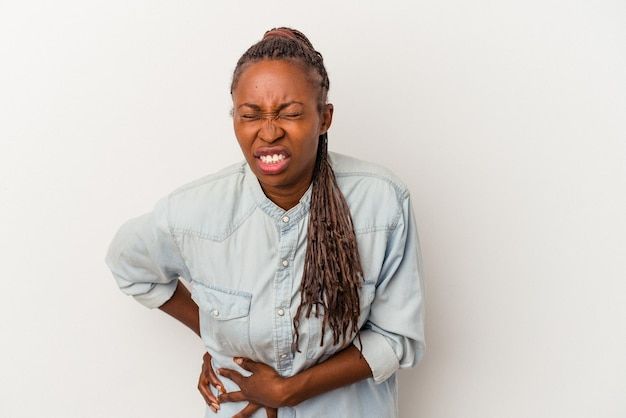
What is Endometriosis?
A condition where tissue similar to the lining of the uterus (endometrium) grows outside the uterus.
- Symptoms: Pelvic pain, painful periods, pain during intercourse, pain with bowel movements or urination, and infertility.
- Pain Location: Pain is typically in the lower abdomen and pelvis, but it can radiate to the lower back and legs.
Pelvic Inflammatory Disease (PID)
- An infection of the reproductive organs, usually caused by sexually transmitted infections (STIs).
- Symptoms: Lower abdominal pain, fever, unusual vaginal discharge, painful intercourse, and painful urination.
- Pain Location: Pain is typically in the lower abdomen and pelvis, often worsening during movement or sexual activity.
Ovarian Cysts
- Fluid-filled sacs on the ovaries, which can be functional (normal) or pathological (abnormal).
- Symptoms: Often asymptomatic, but large or ruptured cysts can cause lower abdominal pain, bloating, and discomfort.
- Pain Location: Pain is usually on one side of the lower abdomen, depending on the location of the cyst.
Management and Treatment
Ovarian Cysts
Management and Treatment
a. Observation:
- For Functional Cysts: Many ovarian cysts, especially functional ones, resolve on their own without treatment. Regular monitoring with follow-up ultrasounds may be recommended to track changes.
b. Pain Management:
- Medications: Over-the-counter pain relievers like ibuprofen or acetaminophen can help manage pain associated with ovarian cysts.
c. Hormonal Birth Control:
- Usage: Hormonal contraceptives, such as birth control pills, patches, or hormonal IUDs, can help regulate menstrual cycles and prevent the formation of new cysts.
d. Surgical Intervention:
- Indications: Surgery may be necessary if the cysts are large, persistent, or causing significant symptoms. Types of surgery include:
- Laparoscopy: A minimally invasive procedure where a small incision is made in the abdomen to remove the cyst.
- Laparotomy: A more invasive surgery if the cyst is large or if there are concerns about ovarian cancer.
e. Lifestyle Changes:
- Diet and Exercise: Maintaining a healthy diet and regular exercise may support overall reproductive health.
2. Pelvic Inflammatory Disease (PID)
Management and Treatment
a. Antibiotic Therapy:
- Treatment: PID is usually treated with a combination of antibiotics to target the bacteria causing the infection. Treatment typically involves a course of oral antibiotics or, in more severe cases, intravenous antibiotics.
b. Pain Management:
- Medications: Over-the-counter pain relievers or prescribed pain medication can help manage pain and discomfort.
c. Follow-Up Care:
- Monitoring: Regular follow-up with a healthcare provider is essential to ensure the infection has cleared and to monitor for potential complications.
d. Partner Treatment:
- Sexual Partners: It is important for sexual partners to be tested and treated for sexually transmitted infections (STIs) to prevent reinfection.
e. Preventive Measures:
- Safe Sex Practices: Use of condoms and regular STI screenings can help prevent PID and its recurrence.
f. Surgery:
- In Severe Cases: In rare cases, if there is an abscess or severe damage, surgical intervention may be required.
3. Endometriosis
Management and Treatment
a. Pain Management:
- Medications: Nonsteroidal anti-inflammatory drugs (NSAIDs) like ibuprofen can help relieve pain. Prescription pain medications may also be used in more severe cases.
b. Hormonal Therapy:
- Options: Various hormonal treatments can help manage symptoms by reducing or eliminating menstruation, which can reduce endometriosis-related pain. These include:
- Birth Control Pills: Help regulate or eliminate periods.
- Progestins: Hormones that can reduce or eliminate menstrual periods.
- GnRH Agonists and Antagonists: Medications that induce a temporary menopause-like state to reduce estrogen levels.
- Aromatase Inhibitors: Reduce estrogen production, which can help manage symptoms.
c. Surgery:
- Indications: Surgery may be recommended to remove endometrial tissue and scar tissue, particularly if symptoms are severe or if fertility is affected. Options include:
- Laparoscopy: A minimally invasive surgery used to remove endometrial implants and scar tissue.
- Laparotomy: In more extensive cases, a larger surgical procedure may be required.
d. Lifestyle and Complementary Therapies:
- Diet and Exercise: A balanced diet and regular exercise can help manage symptoms.
- Alternative Therapies: Acupuncture, physical therapy, and mindfulness practices may provide symptom relief for some individuals.
e. Fertility Treatments:
- Assisted Reproductive Technologies: For those experiencing infertility due to endometriosis, treatments such as in vitro fertilization (IVF) may be considered.
f. Support and Counseling:
- Emotional Support: Therapy or support groups can help individuals manage the emotional impact of endometriosis and chronic pain.
Conclusion
Key Considerations
- Regular Monitoring: Ongoing evaluation by a healthcare provider is essential for managing these conditions effectively.
- Individualized Treatment: Treatment plans should be tailored to each individual’s specific condition, symptoms, and overall health.
